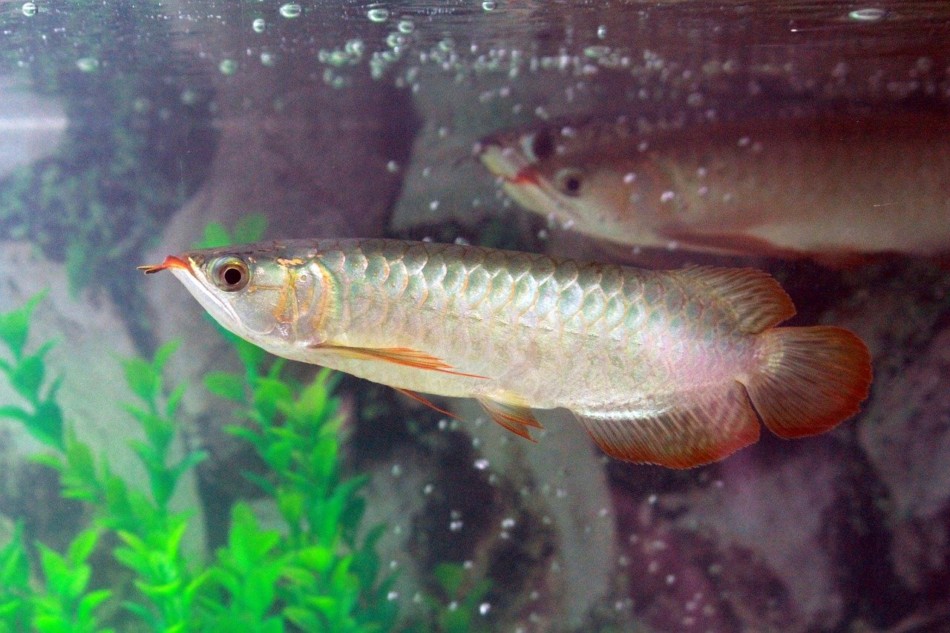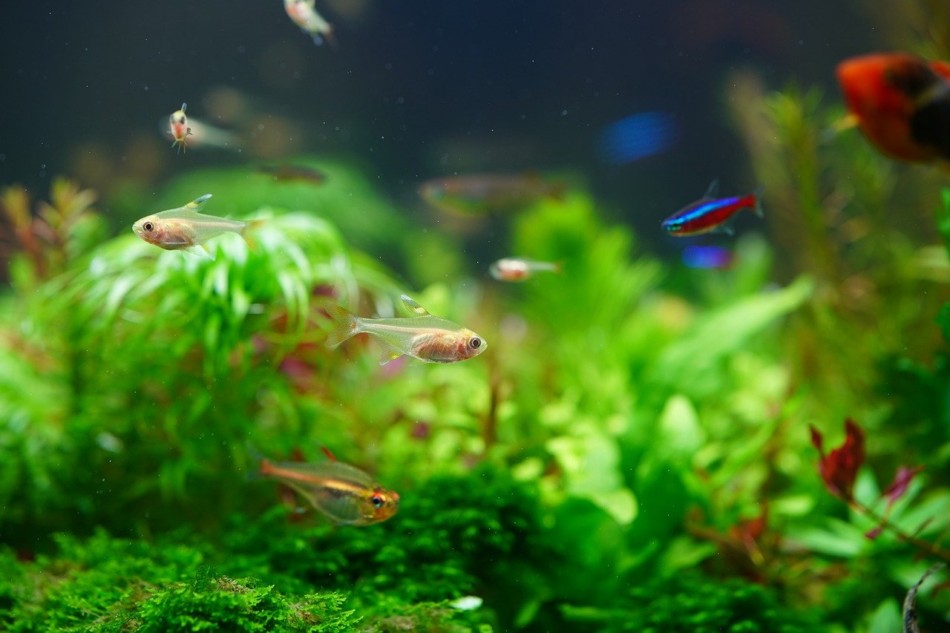This article may contain some affiliate links to products. The links provide me a small percentage of commission but do not cost you anything extra to use. (See full disclosure statement here ).
).
If you’re new to the fishkeeping hobby choosing the right fish tank can feel a bit daunting. But if you follow a few simple guidelines you’ll find that things get a whole lot easier.
A minimum tank size of around 20 Gallons (Approx. 90.8 UK Litres/75.6 US Litres) is often recommended for new fish keepers. This is because it’s generally considered better for new fish keepers to start with a larger tank rather than a smaller one. Aquariums of this size and above are more efficient at keeping the conditions stable, making things easier for the beginner. However, new fish keepers are also successful with smaller aquariums and often start out with nano/small tanks.
I started off with a 17 Litre nano tank before I moved on to bigger aquariums. This just goes to show that there’s no ‘one-size-fits-all’ when it comes to choosing your first fish tank.
And the tank size you’ll need will depend on what you’ve got in mind when it comes to keeping fish.
So, let’s take a look at the things you should consider before you choose your first tank.
What’s The First Step When Choosing A Fish Tank?
If you’ve never kept fish before there are a few important questions that you need to ask yourself before choosing a tank. The questions may seem a little obvious. But having a plan can make all the difference when it comes to keeping fish successfully. And getting off to a good start will set you and your fish up for the future.
Below is a list of the basic questions that will help you to choose the correct size tank for your fish
- Species – What type of fish do you want to keep?
- Quantity – How many fish do you want to keep?
- Size – How big will the fish be when they are full grown adults?
- Breeding – Are the fish likely to breed in your aquarium and increase in number?
- Activity Level – Are your fish a lively species that need plenty of swim-room?
- Plants – Will your fish need room for densely planted areas?
- Space – What’s the maximum tank size that you have space for in your home?
I know the questions are simple ones. But if you take your answers into account before making your choice it will help with getting the tank size right 1st time round.
Choose Your Tank Size
Fish tank sizes can be measured differently depending where in the world you live. For example, in the UK tank size is usually described in litre capacity. In other countries a tank’s water volume is measured in gallons, or even by the tank’s measurements.
So, to keep things simple I’ve listed the tank sizes below in Litre Capacity first, followed by UK and US Gallons in brackets. I hope this will help you with your own calculations.
I’ve also given you some examples of the types of fish that can be kept in each tank size. These are examples only and are not intended to tell you which fish to keep. But they will give you a good idea of what that size tank is suitable for.
Plus, I’ve added some Tip: boxes along the way to help you get going in the fish keeping hobby.
Let’s get started with choosing your tank.
Different Tank Sizes – Choose Your First Fish Tank
Important Note: Tank sizes are not always measured in round numbers. For example, you can buy a 30 Litre tank (round number) but you can also buy tanks that have a measured capacity of 34 Litres. So to keep things simple I’ve listed the tank sizes below in round increments. The types of fish, suggested are based on the lower tank capacity. If your tank is at the higher end of the scale you will have more scope in the quantity and the size of the fish you can keep.
10-20 Litres (Approx. 2.19-4.38 UK Gallons/2.64-5.28 US Gallons) – Fish Tank Size
Tanks of this size can definitely be described as nano tanks. 10-20 Litre aquariums are ideal for nano/small fish. They are also ideal for small spaces, desk tops and children’s bedrooms. Or just because you only want a small tank. Despite their small size they can be aquascaped with plants and will look just as attractive as a larger aquascaped aquarium.
Examples Of Fish For A 10-20 Litre Tank
- Chilli Rasboras
 (article link)
(article link) - Male Endlers
 (article link)
(article link) - Ricefish
 (article link)
(article link) - Sparkling Gourami
 (article link)
(article link) - Neon Tetras
Tip: You may need to add a heater to your tank depending on the type of fish you keep. Indoor temperate and cold water fish don’t usually need a heater. But tropical fish do. So check to see if your chosen fish need a heated tank before you buy them.
30-40 Litres (Approx. 6.59-8.79 UK Gallons/7.92-10.56 US Gallons) – Fish Tank Size
Some fish keepers consider a 30-40 Litre tank as a nano tank. However, others would describe them as small tanks. Either way, this tank size is compact and doesn’t take up a lot of room in your home, study or at the office. They can be aquascaped with live plants just like a nano tank can. But they give you a bit more room to add extra tank decorations such as rocks etc to the scape. Also you can keep small fish that are a little bigger than the nano varieties.
Examples Of Fish For A 30-40 Litre Tank
- Platy Fish
 (article link) and/or Mollies
(article link) and/or Mollies - Small Rasboras e.g. Harlequin
- Gold and/or White Cloud Mountain Minnows
- Dwarf/Pygmy Corydoras Catfish
- Guppies
 (article link)
(article link) - Small Danios e.g. Zebra
- Otocinclus Catfish
Tip: Some fish prefer a fast filter flow and others prefer moderate to slow/minimal flow. So check the flow/current needs of your chosen fish before buying a tank filter. Or buy an adjustable filter that lets you adapt the flow to suit your fish.
50-60 Litres (Approx. 10.99-13.19 UK Gallons/13.20-15.85 US Gallons)- Fish Tank Size
Although generally considered a small/medium tank 50-60 Litre tanks can take up a fair amount of space depending on their shape (tall or long). They do however give you more choice in the size and type of fish that you can keep. There’s also room for plenty of plants and tank decorations depending on how you want your tank to look. And, of course, what type of tank environment your chosen fish will do best in.
Examples Of Fish For A 50-60 Litre Tank
- Giant Danios
- Goldfish (depending on variety and full grown size)
- Dwarf Gourami
- Swordtails
- Brown Pencil Fish
- Kuhli Loach
 (article link)
(article link) - Cherry Barb
Tip: 1 Litre of water weighs approximately 1 Kilo. So when it comes to fish tanks the larger the tank the heavier it will be. You also need to take into account the weight of the tank itself and the other contents, such as gravel and tank ornaments. Which means that stands, cabinets and household surfaces need to be strong enough to safely bear the total weight.

70-80 Litres (15.39-17.59 UK Gallons/18.49-21.13 US Gallons) – Fish Tank Size
70-80 Litre tanks are medium/large tanks depending on your point of view. They can be between 2-3 Feet (Approx.61-91cm) in length depending on the style. You do need plenty of space to accommodate the tank itself and a strong stand/cabinet to bear the weight of the water. This tank size is good for schools/shoals of small fish but can also accommodate medium sized fish too.
Examples Of Fish For A 70-80 Litre Tank
- Rummy Nose Tetras
- A Pair Of Dwarf South American Cichlids
- Rainbow Fish
- Fancy Guppies
 (article link)
(article link) - Bristlenose Plecos
Tip: If you have a new tank setup don’t add all of your chosen fish at once. Add more fish gradually over a period of several weeks/months to let the tank establish. By taking it slowly you will avoid the risk of an ammonia spike in the tank. Ammonia spikes can, and do, kill aquarium fish. So be patient and take it slowly.
90-120 Litres (19.79-26.39 UK Gallons/23.77-31.70 US Gallons) – Fish Tank Size
If you have a 90-120 Litre tank you can keep medium sized fish. Along with whatever plants and tank decorations the fish need and/or ones you would like to see in your aquarium. Tanks of this size can be up to 3 Feet long (Approx. 91 cm) or even longer depending on style. So you will need enough space and a strong stand or cabinet to hold the weight of the tank when it’s set up.
Examples Of Fish For A 90-120 Litre Tank
- Angel Fish
- Rams
- Apistogramma
- Gourami
- Siamese Flying Fox
Note: The choice of the fish above will depend on the variety of that fish and the size when it’s a full grown adult. Check your choice with your Pet Store/Aquatic Dealer/Seller before you buy the fish to make sure the tank will be large enough to accommodate them long-term.
Tip: You don’t just have to keep one kind of fish. You can build a community tank as long as all the fish/shrimp/snails are compatible with each other. Fish of different sizes/species can live happily together as long as they are not aggressive towards each other.
Fish Tanks Bigger Than 120 Litres (26.39 UK Gallons/31.70 US Gallons) – Fish Tank Size
Fish tanks that are bigger than 120 Litres are considered large tanks. They take up a fair bit of space in the home and need a strong stand/cabinet to support them. However, they can, and do, look impressive. They also give you more scope when it comes to fish size and/or fish quantity.
So, if you want to keep large fish such as Arowana, Discus or Oscars, you’re going to need a suitably sized large tank setup. And some large fish need a seriously big tank!
When it comes to large fish species you really do need to do your homework before you buy a tank. Because even if the fish is only a few inches long when you buy it, it could grow to several feet long by the time it’s an adult. And it will grow pretty quickly too if it’s well cared for.
No matter what type of fish you want to keep, whether nano or large, temperate or tropical, make sure you know what tank size they will need when they are full grown. That way you will get the tank size right the 1st time round.

